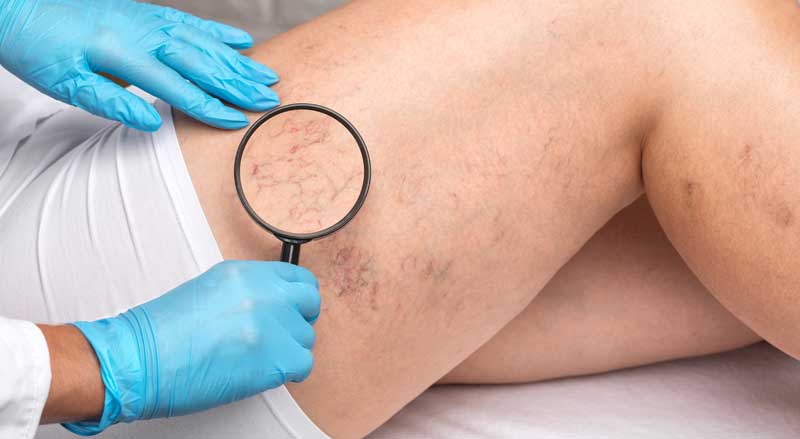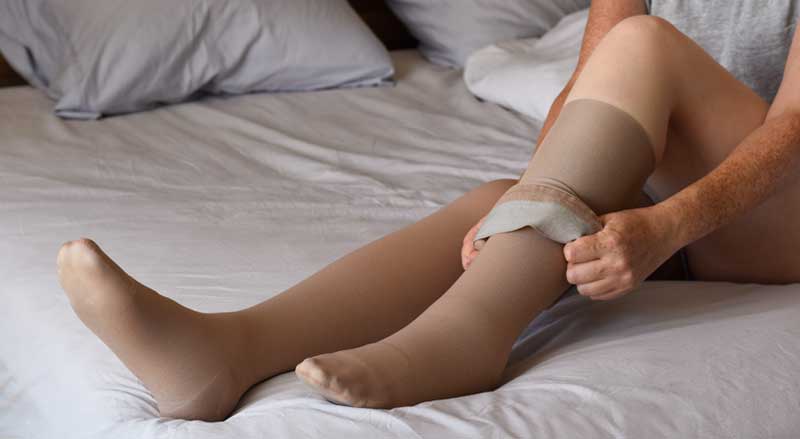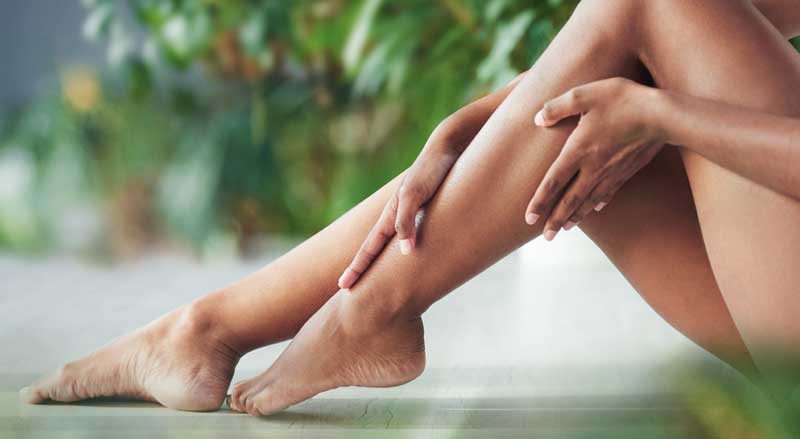The state-of-the-art treatment for eliminating unsightly or bothersome veins is sclerotherapy. This popular, minimally invasive treatment is highly effective in reducing the symptoms and appearance of certain veins. But a common question about sclerotherapy is how long does it last?
What Is Sclerotherapy?
Vein doctors consider sclerotherapy to be the best and most effective treatment for spider and reticular veins, and some smaller varicose veins.
Some people want vein treatment because they are bothered by the veins’ appearance, while some suffer with uncomfortable symptoms. Sclerotherapy will make both types of patients happy. However, insurance will usually only cover treatment costs if it’s a medical necessity.
Sclerotherapy treatment is used to treat veins on the calves, thighs, and other places on your body. It’s a treatment that permanently eliminates existing troubling veins.
During sclerotherapy, your doctor will inject a specialized solution into the vein. The vein becomes irritated and collapses. Blood can’t flow through the damaged vein and instead moves through a nearby healthy vein.
The collapsed vein is naturally reabsorbed into other tissue and is no longer seen through the skin nor painful for the patient.
About the Sclerotherapy Treatment
A sclerotherapy treatment can be as short as 15 minutes or as long as an hour. Patients enjoy the fact that the procedure does not require any anesthesia.
Treatment time will in part depend on how many veins are being treated and the condition of the veins being treated.
If only a few small spider veins in close proximity to one another are to be removed, you might only need one treatment session.
If many veins of various sizes and locations need to be treated, the varicose vein specialist will need to schedule several treatments—usually about a month apart. The varicose vein specialist often treats all veins in two to four sessions.
At the start of the procedure, the medical professional applies numbing cream to the treatment area. This will keep the patient from feeling any pain when the sclerosing agent is injected.
With visual sclerotherapy, the doctor injects a sclerosing agent directly into the vein. This treatment works extremely well for spider veins and reticular veins.
Ultrasound-guided sclerotherapy is often the best way to treat reticular veins and some varicose veins.
Most people resume their regular activities after the procedure. However, you will want to avoid strenuous activity for about a week. You should also avoid hot showers and baths, and direct sunlight.
Your varicose vein doctor may direct you to wear compression socks or stockings for up to two weeks following the treatment—especially when you expect to be on your feet for extended periods of time. Walking for a half-hour a day for the first few weeks will help with results and recovery.
Soon you will see the results you want. With spider veins, you will enjoy results in as little as three to six weeks, with up to 80% of treated veins disappearing after each treatment. Larger veins may take longer to show results, taking three to four months.
Here you can watch an actual demonstration of veins disappearing after sclerotherapy treatment.
How Long Does Sclerotherapy Treatment Last?
Sclerotherapy treatment produces long-lasting results. More precisely, the treated veins will permanently fade away as they collapse and will not be used again by your body. They will never need further treatment.
However, if the original causes leading to spider and reticular vein development persist, new veins will likely develop as time goes on. People often confuse these new veins with a reappearance of the old veins, but this is never the case.
Sclerotherapy treatment is effective and permanent. But it does nothing to keep new problem veins from developing.
Are new problem veins likely to develop after treatment? It depends on whether the causing conditions still exist.
These conditions include:
- Family history
- Being female
- Pregnancy or taking birth-control or hormone replacement pills
- Being overweight
- Taking certain medications
- Continuously sitting or standing for long periods of time
- Aging
Hereditary factors will strongly determine whether you develop more veins in the future. In fact, if both of your parents have varicose veins, you have a probability of about 90% of developing them again in the future. Happily, should new problem veins develop, sclerotherapy will successfully eliminate these new veins too.
Are You a Good Candidate for Sclerotherapy?
Your overall health will determine whether you’re a suitable candidate for this treatment. A consultation with a varicose vein doctor will give you a definitive answer. Happily, most people who are interested in this treatment are excellent candidates.
If you are a woman who is pregnant or breastfeeding, you will need to hold off treatment until after delivery or until breastfeeding concludes.
How to Help Keep New Problem Veins from Developing
After sclerotherapy you will want to keep your legs looking and feeling great. The key to keeping new spider or varicose veins from developing is to work toward a strong vascular system.
This includes:
- Eating a balanced diet, low in salt, with lots of fresh fruits and veggies
- Exercising regularly
- Keeping at or getting to a healthy weight
- Avoiding putting unnecessary stress on your body
- Avoiding high heels
- Avoiding sitting or standing continuously for long amounts of time
- Walking daily
- Staying on certain medications—check with your doctor
- Wearing compression socks when flying or taking a long car trip
Contact us at The New Jersey Vein and Vascular Center to learn more about sclerotherapy treatment with our vein specialist.





